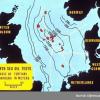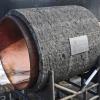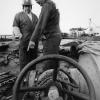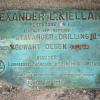Nationalizing international waters
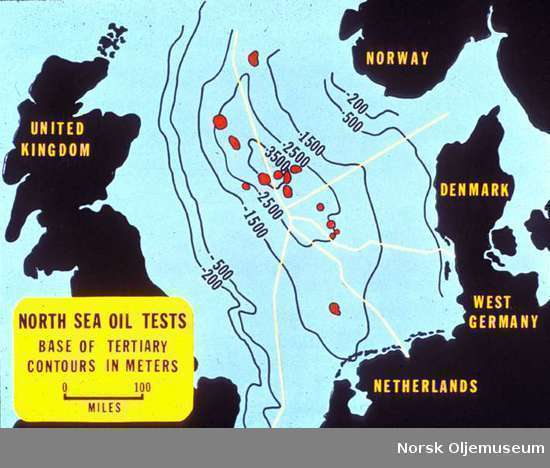
Geological diagram - North Sea Oil test map. Base of tertiary contours in meters.
During the 1960s, eyes started to turn to the North Sea as a potential new source for Europe's growing energy needs.
New advances had been made in oil drilling at sea since the Second World War, and the expansion of motoring and industry in Europe also made it an attractive market for fossil fuels. The discovery of large natural gas fields in 1959 near Groningen in the Netherlands provided the first suggestion that further deposits of fossil fuels might be found beneath the ocean nearby. The US firm Phillips Petroleum was one of the parties that was keenly interested in exploring the possibilities.
At the same time, questions were being raised as to how mineral rights to the ocean floor would be divided. This question was taken up within the Geneva Convention on the Law of the Sea from 1958. The conventions offered a definition of the "continental shelf" as the seabed up to a depth of 200m next to a nation and as far as could feasibly be exploited beyond. Many countries, including Norway, objected to this formulation, not least because of the deep trench immediately off the coast of Norway, and did not sign the treaty.
Nevertheless, petroleum firms began to approach individual nations to try to secure prospecting rights, and the nations surrounding the North Sea began to draw up legislation and make agreements. In 1962, for example, Phillips Petroleum sought in 1962 to gain a concession from the Norwegian government for "that portion of the continental shelf beneath the North Sea which may now or in the future belong to Norway."
In April of 1965, without having signed the treaty, the Norwegian government opened a series of 278 rectangular blocks for production licenses.

How to cite this page
Alexander Badenoch, 'Nationalizing international waters', Inventing Europe, http://www.inventingeurope.eu/story/nationalizing-international-waters
Sources
- Kvendseth, Stig S. Giant Discovery: A History of Ekofisk Through the First 20 Years. Phillips Petroleum Company Norway, 1988.





